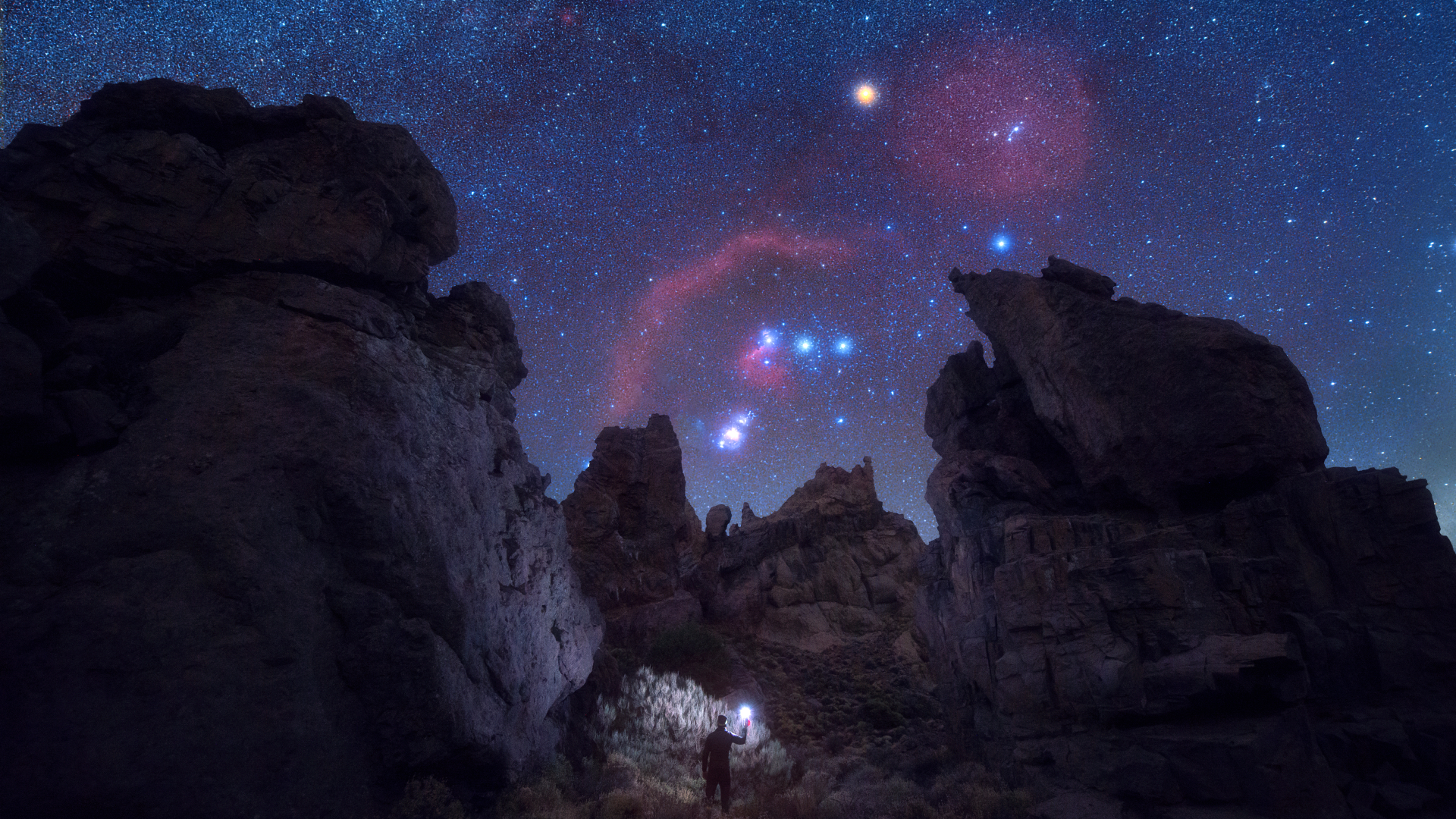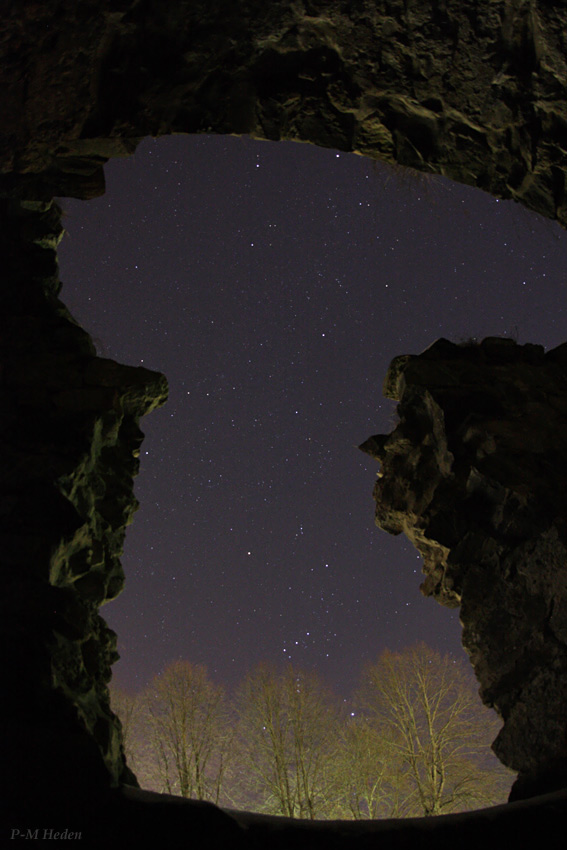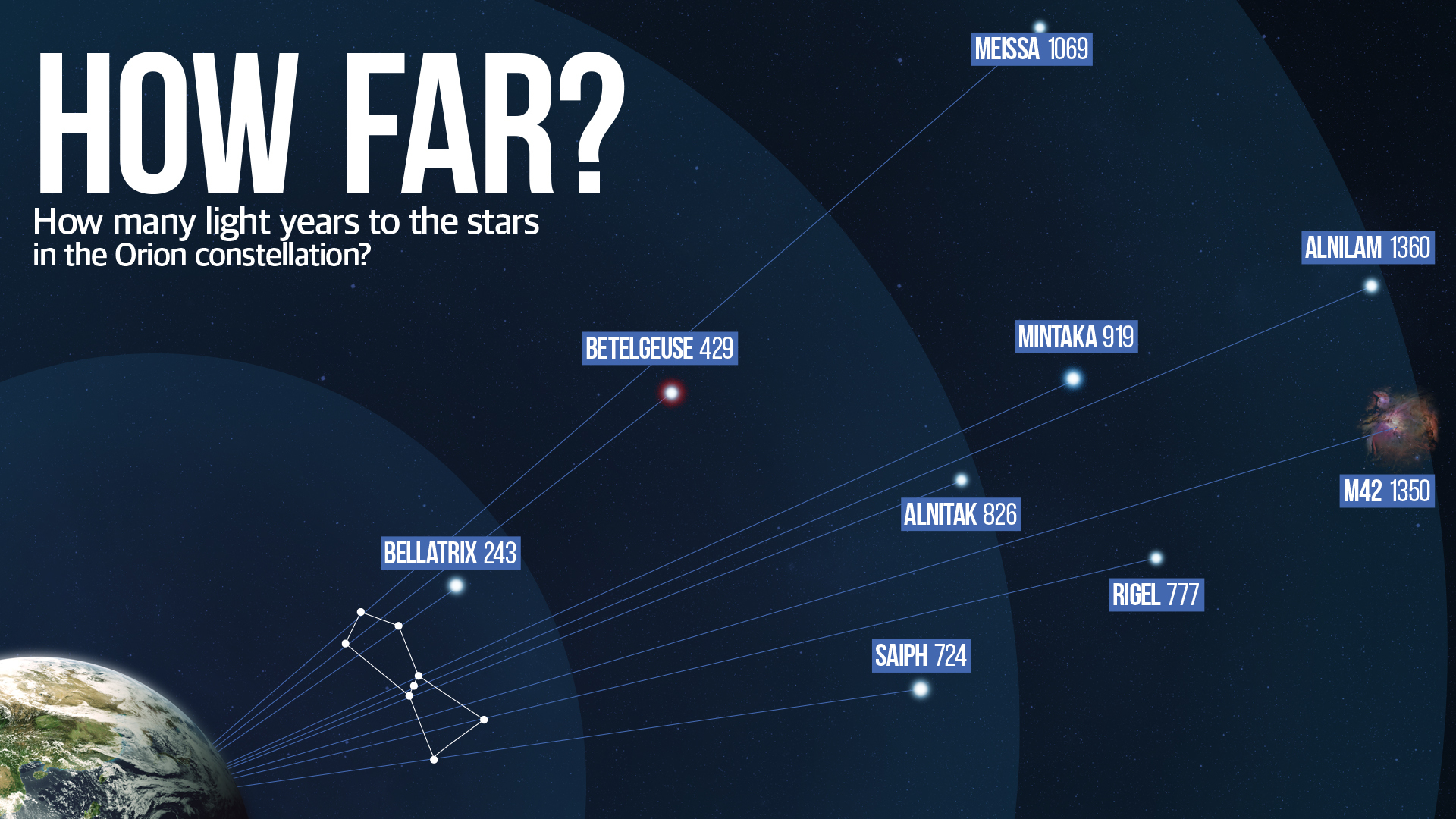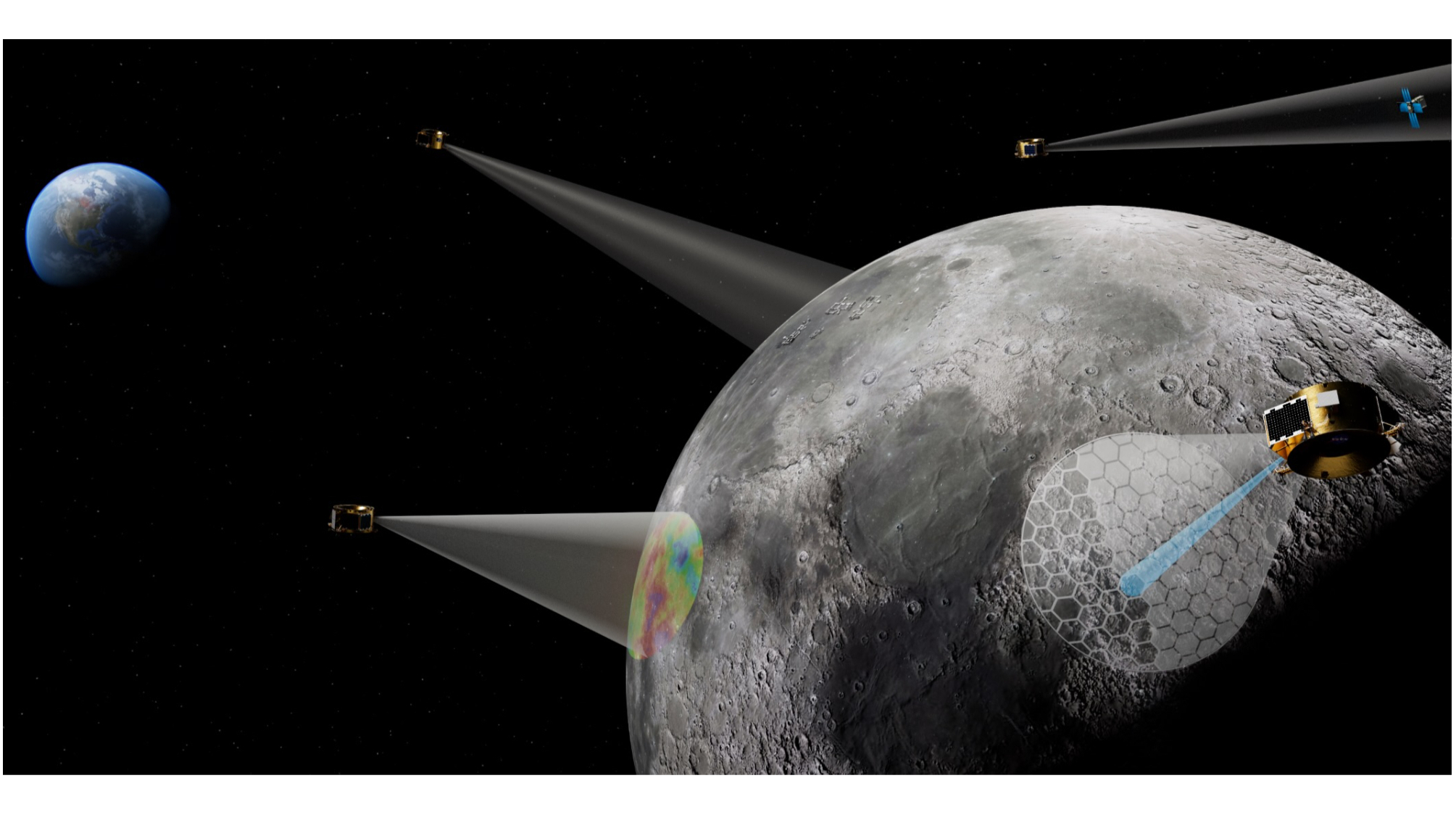Orion's Belt: Stars, location and mythology of the famous asterism
Finding constellations in the night sky isn't always easy, but even beginners' eyes are drawn to the bold trio of stars that form the belt of Orion.

Orion's Belt is a line of three stars located around the middle of the constellation Orion.
The belt is perhaps the most recognizable feature of Orion. Visible around the world, the constellation is named after the eponymous hunter in Greek mythology. Orion's Belt is known as an asterism, a pattern of stars that is not one of the 88 official constellations.
As its name suggests, Orion's Belt typically represents the waist of Orion in depictions of the hunter. Other aspects of his appearance may vary, but he is often shown holding a weapon in one hand and a shield or animal hide in the other, based on the positions of the other stars in the constellation.
Related: Night sky observing guide
What stars make up Orion's Belt?
Orion's Belt consists of three stars. From east to west, they are Alnitak, Alnilam and Mintaka. Separately, these three supergiant stars are several times more massive than the sun, and thousands or tens of thousands of times brighter.
The names of all three stars are Arabic in origin, and all come from phrases that refer to the belt itself, according to astronomer Jim Kaler, an emeritus professor of astronomy at the University of Illinois Urbana-Champaign.

Although these stars appear close to one another in the sky, they are actually light-years apart. According to Robert Massey, deputy executive director at the Royal Astronomical Society in the U.K., Alnitak, Alnilam and Mintaka are roughly 740 light-years, 2,000 light-years and 690 light-years away. NASA has a good visualization of the "depth" of Orion's Belt.
Two of the stars in Orion's Belt, Mintaka and Alnitak, are actually star systems, meaning they consist of multiple stars located close to one another. From our perspective, however, they appear as a single bright light. Mintaka consists of five stars arranged in a complex system, and Alnitak includes three stars, known as Alnitak Aa, Ab and B. Alnilam, on the other hand, is thought to be a single star — a very large and bright one.
Orion Belt FAQs answered by experts
We asked Affelia Wibisono, astronomy education officer at Royal Observatory Greenwich in England, and Robert Massey, deputy executive director at the Royal Astronomical Society in the U.K a few commonly asked questions about Orion's Belt.

Affelia Wibisono is an astronomy education officer at Royal Observatory Greenwich in England.

Robert Massey is the deputy executive director and press officer of the Royal Astronomical Society in the U.K.
What's the easiest way to find Orion's Belt?
The easiest way to find Orion's Belt is to first find Sirius, the brightest star in the night sky. Sirius will appear to twinkle more than any other star, which will make it easy to spot. Near Sirius and further up in the sky are the two brightest stars in Orion — the red supergiant star Betelgeuse, and Rigel, a blue supergiant star. Sirius, Betelgeuse and Rigel mark the points of a triangle. Orion's Belt lies about halfway between Betelgeuse and Rigel — Wibisono.
It's a distinctive three stars of a similar brightness in a line, and they really stand out as part of that kind of box that makes up the constellation Orion itself. In the winter through to the spring [in the Northern Hemisphere], it's pretty prominent above the southern horizon. In the Southern Hemisphere, it will be high above the northern horizon — Massey.
When is Orion's Belt visible?
The best time to see Orion's belt is between November and March for the Northern and Southern hemispheres — Wibisono.
The seasonal changes are that in the autumn, Orion's Belt would be visible in the morning sky before dawn. As you move into December and January, it's best around midnight, and then as you move into the spring sky, it becomes best in the evening. It's easy to spot and in a good position until March, and then after March and April, as it's disappearing into the twilight, it's harder to see — Massey.
How far apart are the stars in Orion's Belt?
Alnitak is roughly 740 light-years from Earth, Alnilam is roughly 2,000 light-years away and Mintaka is roughly 690 light-years away, so that is one way of thinking about the distances between the stars. In terms of the latitudinal, or left-to-right, distance between them, the stars would be tens of light-years apart — Massey.

History and mythology of Orion's Belt
Throughout history, the Orion constellation has been noted independently by several cultures around the world, many of which considered the constellation's appearance to be human-like, according to NASA's Chandra X-ray Observatory page. Ancient Indians saw the figure as a king who was shot by an arrow, with the stars in Orion's Belt representing the arrow.
In ancient Egyptian mythology, the stars in Orion's Belt represented the resting place of the soul of Osiris, the Egyptian god of the deceased. There is even a theory, proposed since the late 20th century, that the ancient Egyptians positioned the pyramids of Giza to align with the stars in Orion's Belt roughly 4,500 years ago. However, the theory is not widely accepted, and researchers disagree on how the stars would have appeared at the time.
Additional resources
For more on the stars that make up Orion's Belt, read this NASA article. To learn more about the Orion correlation theory regarding Orion's Belt and the pyramids of Giza, take a look at this critique by Anthony Fairall or the book "The Orion Mystery" (Crown, 1994), co-authored by theory proponent Robert Bauval
Bibliography
Chandra X-ray Observatory. (n.d.). Orion. NASA. Retrieved February 24, 2023, from https://chandra.si.edu/photo/constellations/orion.html
Hitchens, D. K. (2015). Giza pyramids? Sorry, not Orion's Belt. Prof's ancient Egypt. https://egypt.hitchins.net/pyramid-myths/giza-pyramids-sorry-not.html
Kaler, J. (n.d.). Alnitak. University of Illinois. Retrieved February 24, 2023, from http://stars.astro.illinois.edu/sow/alnitak.html
Maddalena, R. J. (1998). Orion's Belt Stars. National Radio Astronomy Observatory. https://www.gb.nrao.edu/~rmaddale/Education/OrionTourCenter/belt.html
NASA Science. (2020, September 19). Orion in depth. https://science.nasa.gov/orion-depth
Royal Museums Greenwich. (n.d.). Orion. Retrieved February 24, 2023, from https://www.rmg.co.uk/collections/objects/rmgc-object-1087470
The Nine Planets. (n.d.). Mintaka facts. Retrieved February 24, 2023, from https://nineplanets.org/mintaka-%CE%B4-orionis/
Join our Space Forums to keep talking space on the latest missions, night sky and more! And if you have a news tip, correction or comment, let us know at: community@space.com.
Breaking space news, the latest updates on rocket launches, skywatching events and more!

Ed Browne is a freelance journalist based in the UK. Formerly a science reporter for Newsweek, he has a Bachelor's in journalism in addition to a diploma in multimedia journalism from the National Council for the Training of Journalists.
